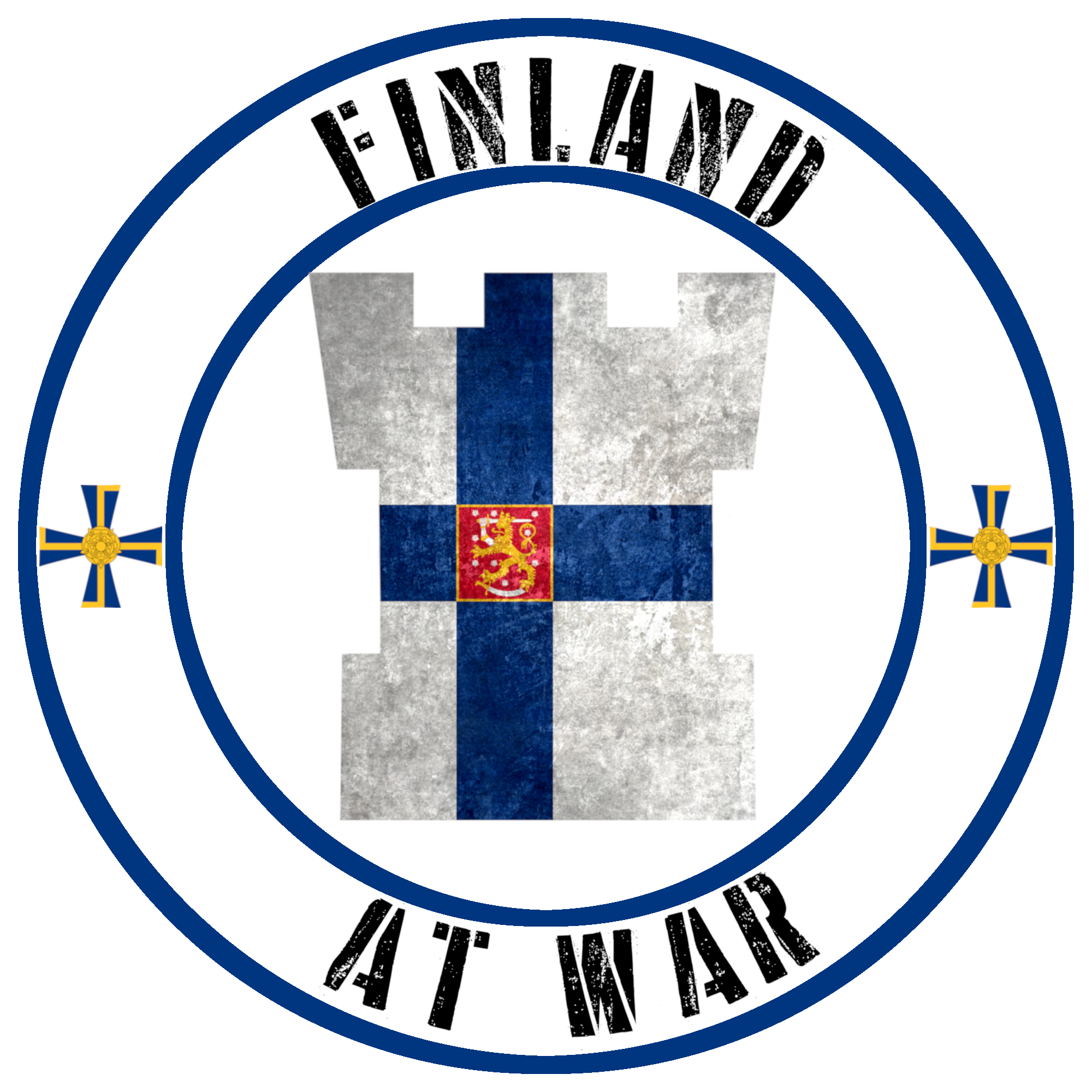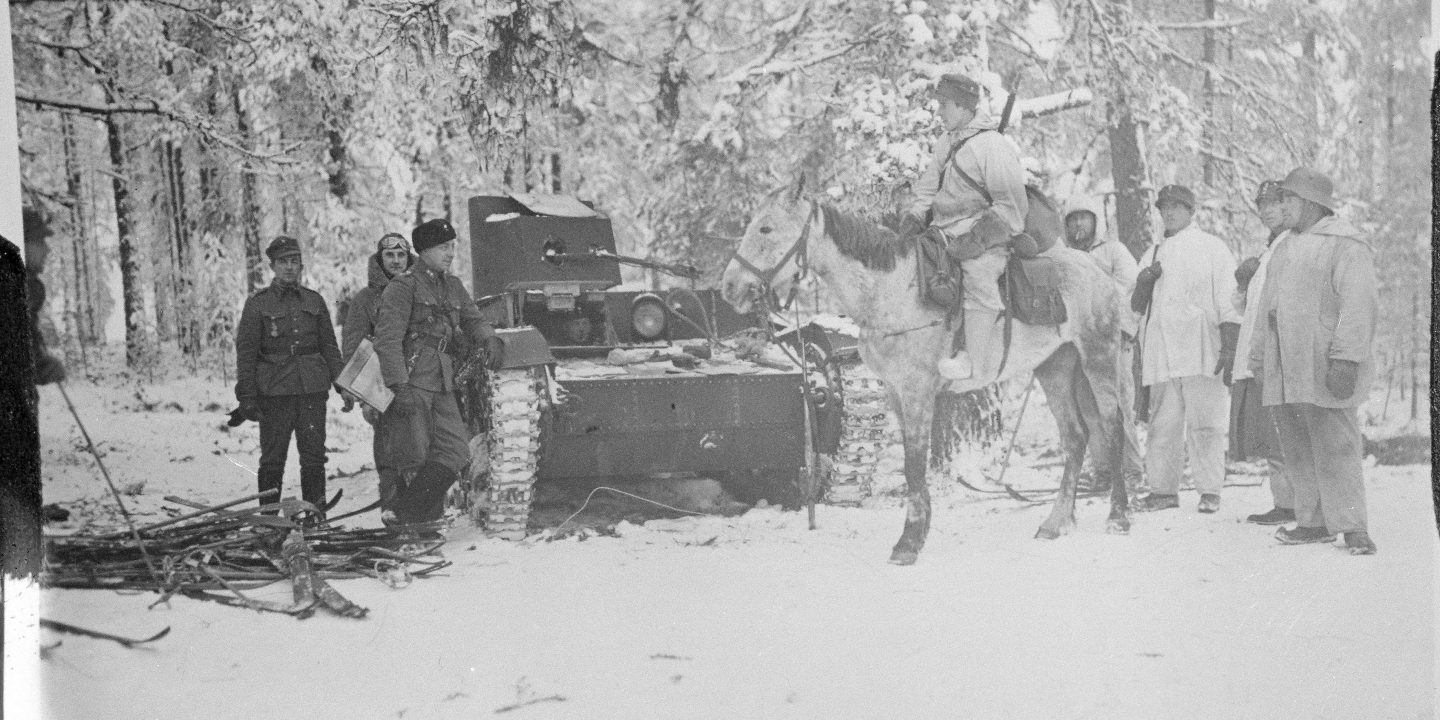The battle of Tolvajärvi was the first major Finnish victory of the Winter War and came at a crucial time for the morale of the entire Finnish military. Its importance to not only the fighting on the northern shore of Lake Ladoga but for the entire conflict cannot be overstated.
Background – IV Corps on the rocks
In accordance to pre-war plans, a corps of two divisions and three additional battalions was assigned to the defence of the area north of Lake Ladoga. It was highlighted through wargames that a strike through this area could become a backdoor to breaking the entire Finnish defensive strategy, which was centred upon the Karelian Isthmus. What wasn’t expected was an entire Army group consisting of 6 rifle divisions and an armoured brigade pushing into the region. The Soviet 8th Army, under the command of Komdiv Ivan Nikitich Khabarov, rolled into Ladoga- Karelia, pushing aside the handful of battalions pitted against them. By the end of the first week, the Soviet had advanced some 60 kilometers. The 139th Rifle Division was encroaching upon the Värtilä railway junction, about 70 kilometers away, and that would open up the entire front and allow for a strike into the Karelian Isthmus and the rear of the Main Defence Line.

Under these conditions, Marshal Mannerheim appointed Colonel Paavo Talvela to command a special division sized battlegroup. Talvela’s orders, to repulse the Soviet advances at Korpiselkä and Ilomantsi. He formed two detachments with his forces, Detachment A consisted of 3 separate battalions and support elements and was tasked with defending the Ilomantsi area. Detachment P, under Talvela’s pre-war friend, Lieutenant Colonel Aaro Pajari, consisted of Infantry Regiment 16 (JR 16), the 5th and 9th batteries of Field Artillery Regiment 12 and 13 respectively combined with units already holding the line at Tolvajärvi, separate battalions 9, 10 and 112 and the Bicycle Battalion 7.
Arrival of Pajari and JR 16 – Stablising the situation
Pajari arrived with elements of the 1st Battalion of Infantry Regiment 16 at Värtilä station on the 7th December. They were immediately sent to relieve friendly forces at Kivisalmi. However, due to the rusk in deployment, they hadn’t been issued with their white camouflage suits and soon troops of Group Räsänen fired upon them believing them to be flanking elements of the 139th Rifle Division. This baptism of fire caused 7 men to be wounded but luckily no fatalities.
The next day brought the wrath of the 139th upon the men of 1st Battalion. Charging across the ice , the Soviet troops put the Finns to flight. It took 8 kilometers of ground before the officers could rally their men again. This display prompted Pajari to berate them, ‘You can run, but you will only die tired!’. Pajari also recognised that the morale of the entire force around Tolvajärvi needed to be boosted and so on the evening on the 8th, took volunteers from the 1st Battalion on its famous raid behind the lines at Kivisalmi. The result of the raid saw two Soviet battalions fight between themselves in the panic and confusion caused by the Finnish assailants.

However, this raid helped to give the Soviet advance pause and so Pajari and Talvela set about making plans for an attack on the Soviet defences at Tolvajärvi. It was decided that the morning of the 11th would give enough time to rest and consolidate. It was then on the evening of the 10th/11th that the strange ‘Sausage War’ took place and so the pair decided to postpone the assault by a day.
Battle of Tolvajärvi – A much needed victory
The plan was simple, encircle the Soviet forces in a pincer, with a central force to assault the believed HQ of the Rifle Division at the tourist Hotel, and destroy them. The northern part of the pincer was designated Osasto (Detachment or Section) Malkamäki and contained Separate Battalion 9 and 1st Battalion of Infantry Regiment 16. The southern pincer saw 3rd Battalion of Infantry Regiment 16 and Separate Battalion 112 under the command of Lieutenant Colonel Pajari. The central push was with 2nd Battalion of Infantry Regiment 16, and a reserve of Separate Battalion 10h and Bicycle Battalion 7.
Major Malkamäki’s detachment was ordered to strike first at 0800 but thanks to a catalogue of errors during their night march, failed to arrive at the start point in time and thus started their advance 45 minutes late. To make up for the lost time, the group charged across the frozen, coverless lake, instead of using the cover of the forest at the northern part of the lake. A ferocious firefight broke out and soon the Finnish units were broken and pulled back. Not all units though retreated, a small company sized group from Separate Battalion 9 seemed to be mistaken by the 718th Rifle Regiment for friendly troops and by the time it was too late, the Finns had devastated the regiment’s headquarters.

Pajari wasn’t without his problems either. His wanted artillery support arrived late and so only a few companies advanced towards their object to take Kotisaari island. The 364th Rifle Regiment reacted strongly and fierce fighting broke out. The artillery support that did arrive only lasted 15 minutes and was of little use, Pajari ordering 2 companies of the 3rd Battalion to support the units of Separate Battalion 112 on Kotisaari island. At 1600, Major Dryahlov of the 364th Rifle Regiment called for a general retreat, giving up the defence of Kotisaari island.
Artillery support didn’t arrive in the centre until 1000 and just in time, as the 609th Rifle Regiment struck across the ice at Tolvajärvi village. This show of heavy firepower swiftly turned the Soviets back towards the tourist Hotel. The men of the 3rd Battalion of Infantry Regiment 16 chased the retreating Soviets only to stumble into a hurricane of fire. They managed to break through the Soviet positions, but with heavy casualties (one platoon for example lost two-thirds of its strength). Fighting turned into small groups of Finns fighting tooth and nail, all unit cohesion was lost. With the main back of the enemy broken and the Hotel surrounded, it was now time to take it.

The towering building commanded an advantageous position on top of a small hill and had been turned into a small fortress. Out of every window was a machine gun, several holes had been cut into the logs for rifles to poke through. The besieged hotel refused to surrender. Help attempted to come in the form of a squadron of flame thrower equipped T-26s but these were ambushed and two were destroyed and a third was abandoned. Pajari sent in his reserves to help the reduced 3rd Battalion and at 1330 a renewed assault with elements of the 3rd Battalion and Separate Battalion 10 began. Vicious hand to hand fighting broke out amongst the foxholes and trenches surrounding the Hotel. Command and control was no longer possible.
Eventually the Finns broke into the Hotel but it still took another two hours before it could be declared in Finnish hands. The entire HQ, aside from the command, Major Litvin who had escaped earlier, of the 609th Rifle Regiment were wiped out during the close quarters combat that erupted inside the Hotel. The crushing of the defenders of the Hotel broke the back of the 139th Rifle Division, forcing a large flight that wouldn’t be stopped until it reached the artillery units of the Corps. Colonel Talvela received Pajari’s victory dispatch with celebration and insisted that the troops now push the attack into the lines of the Corps. Pajari though replied that his men needed to rest and casualties needed to be cared for. Talvela was convinced and ordered Detachment P to retire to the village of Tolvajärvi, leaving small groups holding the newly won grounds.

The Aftermath – The Cost
Pajari’s men managed to gain a significant amount of material during the battle. Some 20 tanks of various types, 60 machine guns of all classifications, 6 75mm artillery guns, 4 45mm anti tank guns, 3 mortars and 1, 429 rifles were counted as taken from the battlefield. This material was much needed and it would be long before the majority was being used against their former owners. The loss of an entire HQ, and the devastation of another, was a huge blow to the Soviet forces in the area. When the 139th took stock of their losses, they recorded 761 dead, 1,715 wounded and another 1,076 missing. An NKVD report upon the unit wrote: ‘On 12th December 1939 the division ceased to exist. It became a crowd of men that had lost the will to fight.’ The 139th Rifle Division’s commander, Brigade Commander Nicholas Beljalev was replaced a few days later for his failure.

The victory had larger consequences. It was reported throughout Finland and internationally. It showed the Finnish soldier and civilian that the Soviets could be stopped. Not only was the Division’s advance stopped, it had effectively put a halt on any attempts by the 1st Rifle Corps to flank around the rear of IV Corps. Colonel Talvela recorded in his diary: ‘Great day of battle at Rolvajärvi. Pajari made a frontal assault capturing large areas. On the left flank, we fought an engagement battle. We gained many spoils of war. Attack failed at Ilomantsi. To celebrate this great day I am going to have a sauna tonight’.
While it was a great victory for the Finns, the cost was relatively high. The fallen was recorded as 103, with another 6 lost presumed dead. Some 250 were wounded.
Sources
Sander, Gordon F. The Hundred Day Winter War: Finland’s Gallant Stand against the Soviet Army. (University Press of Kansas, 2013)
Nenye, Vesa; Munter, Peter; Wirtanen, Toni. Finland at War: The Winter War 1939–1945. (Osprey Publishing, 2015)
Irincheev, Bair. War of the White Death: Finland Against the Soviet Union, 1939-40.(Stackpole Books, 2012)
Trotter, William R. A Frozen Hell: The Russo-Finnish Winter War of 1939–1940. (Algonquin Books, 2000)
http://www.winterwar.com/Battles/Tolvaj.htm
https://talvisota.fi/taistelut/tolvajarvi%e2%88%92ilomantsi/tolvajarven-voitto-1939/
Raunio, Ari & Kilin, Juri. Sodan taisteluja 1 Talvisota. (Weilin+Göös, 2005)


6 thoughts on “The Battle of Tolvajärvi – The First Victory”